I skipped Houston Fotofest International this year, the first session of the longest-lived U.S. photo festival I’ve missed since its 1986 inaugural, which somehow slipped under my radar. I passed on its 2012 edition not only because the festival’s organizational and curatorial premises have grown stale for me, but because, regardless of its country of origin (this year’s “theme” was “Russian photography over the last five decades”), I find so much of the work on view — especially the recent work — so homogenized and derivative that it pains me to look at it.
This doesn’t only hold true for what’s shown on the walls and at the portfolio reviews in Houston, I hasten to add. Over the past two years I’ve attended other photo festivals in Thessalonika, Greece; Dali, in Yunnan province in southwest China; Bratislava, in the Slovak Republic; and New York City. I’ve attended and seen work at the Society for Photographic Education National Conference (though I took a pass on that one too this spring). I’ve wandered through Art Miami and its satellites, where lots of photography and photo-based art gets shown, as well as photo-specific gallery/dealer expos such as Paris Photo and the AIPAD Photography Show in Manhattan.
 During that same stretch I’ve participated as a reviewer at portfolio reviews sponsored by the Photobiennale Greece in Thessalonika, the Palm Beach Photographic Centre (at PDN PhotoPlus International), and the American Society of Media Photographers, the latter two both in New York City. And I get around to group and solo shows, large and small, not only here in the New York area but wherever my travels take me: London, Beijing, Hong Kong, Minneapolis, and other exotic points on the compass.
During that same stretch I’ve participated as a reviewer at portfolio reviews sponsored by the Photobiennale Greece in Thessalonika, the Palm Beach Photographic Centre (at PDN PhotoPlus International), and the American Society of Media Photographers, the latter two both in New York City. And I get around to group and solo shows, large and small, not only here in the New York area but wherever my travels take me: London, Beijing, Hong Kong, Minneapolis, and other exotic points on the compass.
Additionally, I peruse a considerable number of periodicals featuring photographic imagery, and regularly visit an assortment of photo-related websites. As a result, I feel reasonably confident that, however idiosyncratic you may consider my response to what I see, I’ve ingested a representative cross-section of what’s available for viewing at present. The phenomenon I’m limning here is pervasive, not isolated.
Meet the Doppelgängers
Conceptually (I use the word advisedly, and charitably), the vast majority of photography projects I encounter nowadays seem to represent some welling-up of archetypes from the collective unconscious of the academically indoctrinated. Consider these excerpts from two press releases for exhibitions that, by sheer happenstance, crossed my desk this past spring:
Kelli Connell: Double Life, Gallery 339, Philadelphia, May 11-July 21: “In ‘Double Life,’ Kelli Connell constructs scenes that appear to be tender moments from a relationship — a couple flirts or argues or gently holds each other. Yet closer examination reveals a profound puzzle; the two figures are identical. The recognition of this fact comes as one of the most sublime surprises in contemporary photography. . . . Connell creates her subtle tableaux by photographing the same model, who plays both roles in each scene. She then digitally assembles multiple negatives to create a single image. . . .”
Kelli Connell received her BFA in Photography from the Univ. of North Texas in Denton, TX in 1997, and her MFA in Photography from the Texas Women’s University in Denton in 2003.
Rick Odell: My Better Half, SoHo Photo, New York City, June 6-30: “Odell explains that each of the 23 images in his show is a double portrait that at first appears to represent a male and female couple. However, the pictures are, in fact, digitally manipulated composites of two photographs of the same subject — one of a man in drag persona masquerading as a woman and one of the same man with masculine attire and grooming. In images with more than two figures, each romantic pair is a single man cast in both gender roles.”
Rick Odell received his BFA with a concentration in Photography from Hofstra University New York in 1998 and his MFA with a concentration in Photography from Long Island University C. W. Post Campus, New York in 2009.
Coincidence? You decide! I don’t suggest that either of these picture-makers knows, or knows of, or has encountered work by, the other. Nor that they were separated at birth. Just that something’s in the academy-filtered air they’ve breathed, or the academy-blend Kool-Aid they’ve imbibed.
Now, if there are two certified MFA grads energetically exploiting this little “profound,” “sublime,” and “subtle” conceit, you can bet there’s another two dozen or so hard at it whose promo simply hasn’t yet come my way. Which means some savvy young curator out there already plans the group show surveying this instant cliché.
It’s called “Meet the Doppelgängers,” and it includes such predecessors as Yasumasa Morimura, who explored this option a quarter of a century ago in such works as “Portrait (Twins),” 1988, a parodic reconstruction of Manet’s “Olympia” of 1863; “Blinded by the Light,” 1991, a reconstruction of Pieter Brueghel’s 1568 painting “Parable for the blind”; and “Angels Descending a Staircase” (1991), his revision of Edward Burne-Jones’s 1880 painting “The Golden Stairs.” The group show will also devote a section to such vernacular works as the White House/Bin Laden Situation Room with Obama’s face on everyone’s body . . . you get the drift. I’m snoozing already.
Same New Same New
In the kerfuffle that ensued from my brief, ill-advised participation in a photo-specific online forum last winter, the proprietor of a commercial photo gallery in Brooklyn’s DUMBO neighborhood opined, “Coleman . . . hasn’t published anything of note for some time; his blog is more a collation of bits and pieces he researches from the web and doesn’t really address photographs per se. The only really interesting thing he’s written on actual photographs, for some time, is the recent ‘conversation’ about Jeff Wall with DLK.”
Patently, in that reader’s view my obsessive tracking of and quixotic intervention in the lamentable and preventable dismantling of a major collection of photographs, my observations on the machinations of a famous photographer’s estate in relation to a group of found negatives, my commentaries on a great musician’s use of photographs as source material for his mediocre paintings, and my ruminations on the citizen-journalist documentation of the notorious “pepper-spray cop” don’t qualify as “of note.” I have to assume, then, that by “photographs per se” and “actual photographs” she means the genres of contemporary work produced for the art market that she and her fellow gallery owners and private dealers devote themselves to selling, and that for my writing to strike her as “of note” it would have to serve their promotional purposes. In short, I’m not writing the kinds of reviews and profiles that would bring buyers to her door.
As it happens, over the past four years I’ve published essays on Kate Breakey, Wynn Bullock, Harold Feinstein, Nancy Hellebrand, Connie Imboden, Jerry Spagnoli, Errol Sawyer, Edward Steichen, Robert Stivers, Maggie Taylor, Philip Tsiaras, Jerry Uelsmann, Yang Yankang, Liu Xia, and at least a dozen other individual picture-makers, some well-known, some unfamiliar to most. So you might say that, insofar as writing about “photographs per se” and “actual photographs” goes, I’ve kept my hand in. I wouldn’t expect acquaintance with all that work from anyone, but — since I do list those publications here — willful ignorance of their very existence surely undermines the credibility of any assessment of my recent output.
Coincidentally, before leaving for China in May I did head to DUMBO for the opening vernissage of the New York Photo Festival (NYPH), which struck me as the quintessential generic photo festival, with absolutely no distinguishing features. (It bills itself as “The Future of Contemporary Photography,” which gives me paws.) The press preview included a walking tour of the exhibitions sponsored by the NYPH and organized by its designated curators, whose route at one point took us into a building that held several commercial galleries as well. Ducking away from the tour, I strolled into one of those, realizing with a start that I’d entered the eponymous gallery of the vendor quoted above. On the walls thereof I found amiable, well-crafted gelatin-silver prints of neopictorialist images by two mid-career photographers, one American, one Czech — eminently decorative, eminently safe, eminently saleable, eminently forgettable.
In the “conversation” with Loring Knoblauch of the website DLK Collection that this gallery owner considers “the only really interesting thing [I’ve] written on actual photographs, for some time,” I opened my half of the dialogue by explaining my reasons for moving away from reviewing exhibitions and books over the past decade. Here’s one of those: “[S]ad to say, I find most everything I do see — in the galleries and museums, at portfolio reviews, at photo festivals — ‘profoundly mediocre,’ to quote the late Lee Witkin. So I simply got tired of ‘stoking the star-maker machinery behind the art photograph,’ to paraphrase Joni Mitchell.”
Which means that I stopped reviewing due in part to exhibitions such as the one I stumbled across at this kvetcher’s shop.
(For an index of links to all posts in this series, click here.)
•
This post supported by a donation from the Estate of Lyle Bongé.



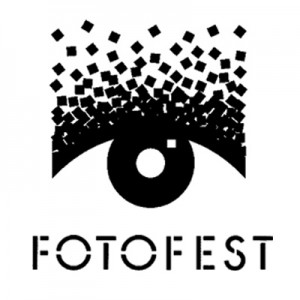
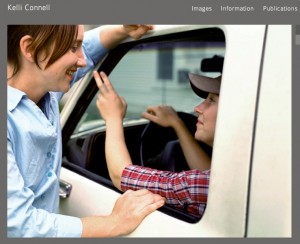
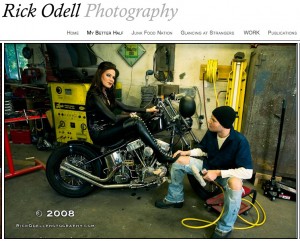
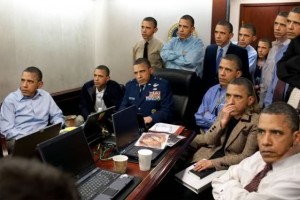

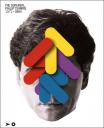
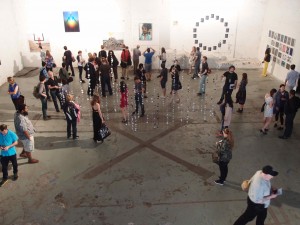




Finally someone tells the truth about the current state of the photography “Art” market!
Keep up the good work Allan, the World needs you.
About the time of my TBI I had begun to notice the effect of the Academic MFA Photography mill. It’s reassuring to know that I haven’t missed anything by not seeing much photography in the past few years. “Coleman… hasn’t published anything of note for some time” is missing the point, as what you have published has been interesting and relevant. The role of the critic was never, in my opinion “stoking the star-maker machinery behind the art photograph.” If there was a tipping point, it may be the advent of digital cameras, and the profligate use of Photoshop. I cringe at the sight of yet another Photoshopped image. Armed with technology, photographers no longer had to trouble themselves with seeing which, I had always believed, was the point of making photographs in the first place. There are a few photographers who are still making images worth seeing, but finding them is not unlike digging through that pile of manure in the certainty there must be a pony underneath. “Profoundly mediocre” is a sad commentary on the state of photography today, but photographs seem to have become just another product to be marketed in an era when consuming is our primary activity. Blog on!
$$$$$$$$$$$$$$$$$$
Sorry to see Kelli Connell heading up your list of so-called “Doppelgänger” photographers, making what I presume you consider to be uninteresting and vapid photographic work using digital technology. Ms. Connell’s evocative work is as far a cry from that silly multiple “Obama in the crisis room” picture as I could possibly imagine. While the state of photography–as evidenced by the art fair and photo festival market anyway–appears to be one in which vapid intent chases its tail via high production values and insipid content, I believe that Kelli Connell’s work is the exception to this current state of affairs. I conducted an interview with her that is published in her recent book that I believe brings insight to her practice for the viewer. Sorry to see her being so casually dismissed by you Allan. I actually think you’d like the work. Have another look.
Having never seen Connell’s work “in the flesh,” but only at her website, I pass no judgment on it. I merely noted her project’s apparent conceptual similarity to that of Rick Odell, based on the press releases for their approximately concurrent exhibitions.
And I used the term “Doppelgängers” not to suggest that these photographers and others exploiting this conceit are each other’s doubles (though you could certainly read it that way), but in relation to the imagistic premise itself, which implicitly refers to the legend that each of us has a double — “Doppelgänger” in German — somewhere in the world, of whom we’re usually quite unaware.
Photography, including its analog versions, enables such doubling, which goes back at least as far as O. G. Rejlander’s 1871 self-portrait “OGR the Artist Introduces OGR the Volunteer.”
I like your comments on the Houston T.X photo Fest – that it Pains you to look at the latest of the Russian Photography – Wow I found a great sense of humor there – but for some odd reason I found you to be serious thanks A.D for your honest Thoughts and insight –
The only Russian photography I’ve encountered recently was that in the two-person show in DUMBO this past May that I refer to at the end of the post. I don’t know what they showed at Fotofest this time out. A lot of fine work came out of the former Soviet Union, including Russia of course, up through the mid-’90s, and I wrote about quite a bit of it back when I was reviewing and providing critical reportage on festivals and other such events. Some of what I admired then may have ended up on the walls in Houston this past spring. But I haven’t seen much since from that part of the world that excites me.
I like to think that seriousness and humor aren’t mutually exclusive.
Thank you for giving voice to what so many feel (photographers, collectors and afficienados alike). Photography today(in the U.S. at least) seems to embody the worst of the Parisian “Salon System”, locking out new ideas or anything different from what has been determined to be “au currant” in NYC. A pattern which began with an alliance of mutual convenience between Ansel Adams and the Newhalls (MOMA) has become the norm. The photographer washes the hand of the curator, who is lauded by the critic who is them employed by the curator to write the blurb for the next catalogue… ad infinitum.
The modern hallmark of “making it” as a photographer today is having galleries demand that you rip off your own work to give their buyers work that is “the same but different”, leaving the artist’s creative growth in suspended animation until the market moves on. (In effect they become their own doppelganger…). As for the academics and curators, with a few courageous exceptions, it seems they will say or embrace whatever absurd position that will allow them to stake their intellectual flag where none have gone before (with good reason). After all, no one ever got their dissertation passed for endorsing what is plain to see (or sensible).
One last thing, could people please stop leaping to the defense of people, causes, etc in which they have a vested economic or academic interest? It belittles both the writer and their audience.
While enjoy reading your insights about the shortcomings of contemporary photography, I would like to read what you really think a well-made photograph is (and without having to enroll in an online course to find out).
Hold your horses, chum. I’m getting there.
Mr.Coleman,
Your insightful criticism is of great value. Please continue with your important work.
The discovery of these Doppelgangers is not especially significant. If we study any era of photography we find clusters of good people doing overlapping work. Consider for example Strand, Sheeler and Steiner or The Photo League. Frank and Cartier Bresson have much in common too .
You’re comparing apples and oranges, methinks. The examples you give represent what Thomas Kuhn called paradigms — thought experiments that attracted hundreds if not thousands of practitioners because the possibilities were so numerous. The Photo League posed the question of what would result if the working class were photographed empathetically, from within. Frank and Bresson asked and gave their own idiosyncratic answers to the question of how the 35mm. rangefinder camera could be used for gestural drawing in the “social landscape.” Those questions, per Kuhn, drew other experimenters because they encouraged the exploration of multiple avenues. “What happens if I use the same model to represent two different figures in my staged tableaux” hardly has the same breadth; it’s a question of a different order and kind.
Well, I finally decided to take a look at Rick Odell’s website to see if there might, in fact, be more of a resemblance to Ms. Connell’s work than I might have thought. The garishly amateurish quality of that work (and the website in general) only reassured me that you are truly “comparing apples and oranges” (or more like apples and spinach) in order to make a convenient, easy, and incorrect point in this case. I don’t need to here mount a defense of Ms. Connell’s work, which is holding its own quite well (and with good reason). Come on Allan…making such a comparison based on a press release and a cursory glance at a website falls way short of the mark for a knowing examination and discussion of their work. You seem to have incited a small group of “afficenados” [sic] like Mr. Logghe and others who are happy to accept your premise unquestionably. I would–as in most things–simply encourage a more nuanced and knowing reading of both the work of seemingly related photographers and the broader issues about which you are writing. I know it couldn’t be your intention, but the anti-academic and “art world conspiracy theory” responses that your article seems to have provoked from some are mildly disturbing…at least from my measure vantage point and three and a half decades in the field.
What I compare in this post, quite clearly, are the concepts behind two autonomous bodies of work by two photographers, apparently strangers to each other, as articulated in the accompanying press releases and/or artists’ statements for their shows, presumably written and/or approved for publication by the artists. Having seen neither show (also clear from my post), I offer no evaluation of the works themselves.
My purpose here is not to “incite” anything or anyone, but to articulate the reasons so much contemporary work bores me to tears. The fact that those who produce it, almost without exception, have passed through the academic photo-ed system cannot be entirely irrelevant to this phenomenon. Conceivably, it’s the elephant in the room.
P.S. You can add to the list of those exploiting the Doppelgänger concept Veronika Marquez, whose “Camila” series of self-portraits represents her in her present life and as the prostitute she once worked as. Academically trained as a photographer.
And let’s also add to the Doppelgänger photographers the Japanese Tomoko Sawada, whose series “School Days” has her face on the bodies of all her classmates in an assortment of group portraits. Academically trained as a photographer.
Though I think his casually applied use of the concept of unquestioning acceptence his exactly the sort of linquistic dissembling that is the hallmark of disciples (and preachers) of the lamentable Status Quo.
Thank you to Mr. Bey for the spelling correction, nice use of misdirection.
(Sorry the computer swallowed part of my last reply.) It should read;
Though I think Bey’s casually applied use of the concept “unquestioning acceptence” is ironic, this is exactly the sort of linquistic diseembling that is the hallmark of disciples (and preachers) of the Status Quo. An establishment with which he smphatically identifies himelf (three and a half decades and counting…)
Thank you Mr. Bey for the spelling correction, nice use of misdirection.
Thank you for your honesty. So much “art,” including photography, has just become another commodity for consumers, not unlike McDonald’s or Starbucks.
I am an amateur camera-slinger working on a book called, “I am not a photographer: How you can become one too”. While writing about what I see as the “sameness of photography” — especially some of mine relative to other wildlife and landscape photographers, I Googled “Sameness of photography” (sensing it wasn’t an original thought). One link was to fotosavant. At the bottom of the page was a second link to your observations.
I have to say your writing and sense of reasoning is almost as palpable as an ice cold Corona lite. Almost. I can’t wait to read more. You have inspired me to go through my own site and remove everything that is clearly a copy-cat style of nature photography. I know when I am being somewhat spontaneous or original and when I’m just trying to look artsy-fartsy. I just need to remember it in the field.
Thank you for what you do.
My pleasure.
The post to which that link at fotosavant took you was the first in a series on the subject of “Trope: The Well-Made Photograph.” That series hasn’t concluded yet; I have a few more related posts in the hopper. But you’ll find links to all of them so far here.
In re “Almost as palpable as an ice-cold Corona lite” . . . I’ll consider that for my headstone.
A breath of fresh air, though I don’t totally agree with some of the specifics. I have very little formal photography training myself, but have found myself producing works that fit into many of the categories you identify – perhaps it’s due to my overall unconscious peripheral awareness of trends in photography or basic MFA art world bias, or maybe it’s simply an intuitive response to the overall western world zeitgeist that has been somewhat mitigated by a love and awareness of contemporary art and photography. Who can say for sure, and yet “admitting I have a problem” is the first step towards recovery. One day at a time…
Meanwhile, I also found it highly interesting that the current show at the Center for Photography at Woodstock is in fact titled “Doubles, Dualities & Doppelgängers” and of course has Kelli Connell as well as many of the other “usual suspects”. Take a look: http://www.cpw.org/exhibitions/2012/twins/pages/gallery_twins.html
I have to say that although I agree with your overall premise that most if not all of contemporary photography looks the same these days, it was still a surprisingly diverse show spanning several generations and ultimately became a survey of the history of photography using a very specific subject and premise as a unifying factor to present diverse styles, concepts and approaches. I think that I take the long view that was eluded to, in that the current homogeneity will lead to positive radical change. I think of how DeKooning et. al. ultimately led to Rauschenberg and Johns, and how in hindsight we can all appreciate both the instigation and the result and see the full range and history. Remember, historically photography is still young, and although painting has irrevocably been altered by photography, it still persists. Photography is still barely a teenager – it just needs to grow up, and so do all of us along with it – hopefully this conversation will continue and the current state of conservative assumptions about what makes a “good” photo will become less relevant.
Let’s not forget that while De Kooning, Pollock, Morris Louis, and others of that general tendency went to art school, and in some cases then apprenticed with other artists (Pollock with the regionalist realist Thomas Hart Benton, for example), the work for which they became not only did not conform to the academic and professional models they’d absorbed but in most cases rejected those models, even violently. Not at all the case with these tropists.
“Unfortunately, too many artists have lost touch with the general audience and have retreated to an airless echo chamber. The art world, like humanities faculties, suffers from a monolithic political orthodoxy—an upper-middle-class liberalism far from the fiery antiestablishment leftism of the 1960s.”
“The vulnerability of students and faculty alike to factitious theory about the arts is in large part due to the bourgeois drift of the last half century.”
CAMILLE PAGLIA
http://online.wsj.com/article/SB10000872396390444223104578034480670026450.html
I disagree with most of her opinions, but, think the above support your argument.
Later.